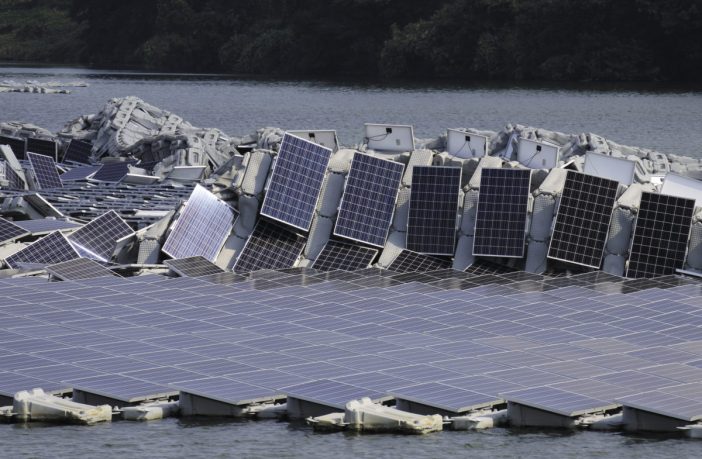- Academics from the Korean Institute of Machinery and Materials have developed a safety analysis procedure to judge when different kinds of floating PV arrays are safe to install in the field.
- They validated their numerical simulations and shared their findings in “Effects of various inlet angle of wind and wave loads on floating photovoltaic system considering stress distributions,” which was recently published in Journal of Cleaner Production.
“We will use these findings to install and operate a floating PV system at the Saemangeum tidal flats, on the coast of the Yellow Sea, on the west coast of South Korea,” researcher Byung-Ju Lim told pv magazine.
The South Korean government is currently developing a 2.1 GW floating solar complex with the support of the Saemangeum Development and Investment Agency (SDIA). The academics built their safety analysis model through three types of numerical simulations: computational fluid dynamic (CFD), hydraulic dynamics analysis, and transient finite element analysis (FEA).
Related news: Japanese solar plant catches fire
The CFD and hydraulic dynamics simulated the wind and wave loads on the floating PV system. The scientists used FEA to analyze stress distribution on PV systems at various inlet angles for wind and wave loads. They used the results of the numerical simulations to judge the safety of the floating PV arrays.
“If the current design of the floating PV system is judged unsafe, then it can be remodeled to eliminate the weak points. If the design is judged safe, then it can be installed at the desired site,” the researchers explained.
Related news: Japan’s largest flaoting solar plant reconstructed after typhoon impact
The simulations used a floating PV system consisting of 9 modules, each measuring 1.03 meters by 2.08 meters. The panels had a 15-degree tilt angle. The solar system was supported by 15 floaters made of high-density polyethylene (HPDE).
The South Korean team conducted a hydraulic dynamics analysis at a wave pool considering a 1:10 scale model. They found that the local maximum error was 19.4% and the minimum error 0.6%. The scientists also tested the area-averaged drag coefficients (CD) on the solar panels at various inlet angles, the displacement of the unit floating PV system under the regular wave condition, and the stress distribution for floating installations.
“The results confirmed that the stress distribution on the solar panels, supporting frames, and floating bodies did not exceed the yield strengths of the constituent materials,” the researchers concluded. “Thus, the unit floating PV system was safe under the wind and wave conditions considered.”
The results also point to potential safety and cost-improvement strategies for floating solar. “Installing a windshield instead of solar panels at the edge of the PV array could reduce the load and improve safety,” the scientists said, noting that the results show that the first and last rows of the solar panels are exposed to higher wind loads.
Developers could also reduce system costs by replacing the HDPE floaters in the middle of systems with medium-density polyethylene (MDPE) floaters, which are around 20% cheaper, according to the academics. This is supported by the results of hydraulic dynamics analysis, which show that the sheltering effect reduced the loads on the middle of the floating PV system by 32% to 54% compared to the edges.
Link to the full paper HERE
Author: Beatriz Santos
This article was originally published in pv magazine and is republished with permission.















